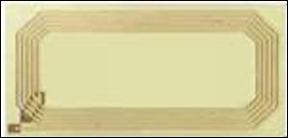Aug 16, 2005Singapore's Institute of Microelectronics (IME) says it has developed the world's first passive read-write RFID tag with an on-chip antenna (OCA). The institute claims its new RFID chip and antenna design could appreciably cut the cost of manufacturing RFID inlays for specific applications.
"With the antenna embedded on top of the chip, we can significantly reduce the size of the tag to less than 1 square millimeter," says Rajinder Singh, head of IME's Integrated Circuits & Systems Lab, "small enough to be embedded in applications such as laboratory samples, clothes, paper documents or checks."

The new tag, which operates at 2.45 GHz and uses a proprietary protocol developed by IME, has 128 bits of memory and a read range of less than 1mm. Most other RFID chips are manufactured separately from the antennas; the two components later joined to form inlays. By eliminating the need for an off-chip antenna, substrate materials or other expenses involved in combining chips with antennas, IME maintains its method could cut the cost of producing RFID labels.
"Production costs for OCA tags could go as low as 4 to 6 U.S. cents in large-volume production [a few million tags], much lower than the 20 to 30 U.S. cents the conventional tags cost," says Singh.
IME reports it has already demonstrated prototypes of its new RFID tag. In conjunction with Exploit Technologies Pte Ltd. (ETPL)—IME's sister organization and the commercialization arm of the Singapore's Agency for Science, Technology and Research (A*STAR)—the institute is looking to further develop and license the technology. Moreover, IME says it is seeking other potential partners to customize the design to target specific end-user applications. Singh does not rule out the use of the tag in supply chain applications, but stresses that the OCA design is best suited to niche applications requiring short-range, very small, low-cost RFID tags.
Under its RFID proof-of-concept initiative, Exploit Technologies says it will bear the costs of adapting the tag design for specific industries as partner companies step in to market the technology. "This initiative leverages on the technical capability of IME and absorbs the financial risk," says Emily Tan, senior vice president of Exploit Technologies' spin-off management division.

